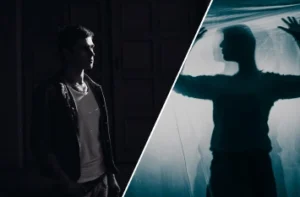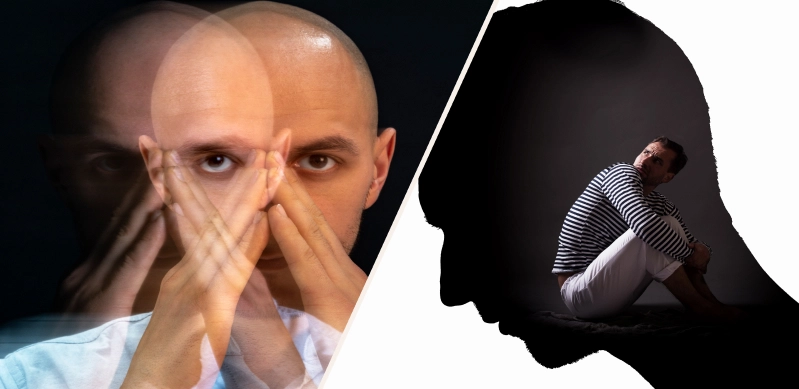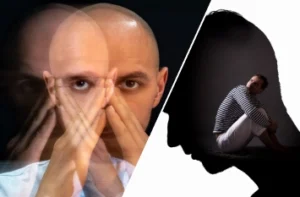
Delusions of Grandeur: Types and Symptoms
Delusions of Grandeur: Types and Symptoms Get Instant Relief Now! Delusions of grandeur are a fascinating and complex psychological phenomenon where individuals hold an inflated

Bipolar disorder is a complex mental health condition characterized by extreme shifts in mood, energy, and activity levels. It is commonly divided into two main types: Bipolar I and Bipolar II. Bipolar I disorder involves manic episodes that can be severe and may include psychotic symptoms, while Bipolar II disorder involves hypomanic episodes, which are less intense than manic episodes but still disruptive.
Living with bipolar disorder can be incredibly challenging, as individuals may struggle with managing their emotions, relationships, and daily functioning during both manic and depressive episodes.
Let’s discuss the differences between Bipolar I and Bipolar II, we are also going to explore their symptoms, diagnostic criteria, treatment options, and the impact they can have on individuals’ lives.
Bipolar I disorder is a mental health condition characterized by manic episodes that can last for at least seven days or be severe enough to require immediate hospitalization. These manic episodes are marked by intense bursts of energy, heightened mood, and sometimes psychosis, where individuals may lose touch with reality.
Alongside manic episodes, individuals with Bipolar I also experience depressive episodes, which can bring about feelings of sadness, hopelessness, and low energy. The combination of extreme highs and lows in Bipolar I can significantly disrupt daily functioning and impact relationships and overall quality of life.
Understanding the symptoms and patterns of Bipolar I is crucial for accurate diagnosis and effective management of the condition.
Bipolar II disorder is a mental health condition characterized by recurring episodes of depression and hypomania. Unlike Bipolar I disorder, individuals with Bipolar II experience hypomanic episodes, which are less severe than full-blown manic episodes but still exhibit noticeable changes in mood, energy, and activity levels.
Hypomanic episodes may involve increased productivity, heightened creativity, and elevated mood, but they do not typically result in significant impairment in functioning or require hospitalization. However, these periods of hypomania alternate with depressive episodes, during which individuals may experience profound sadness, lethargy, and difficulty concentrating.
Bipolar II disorder can present unique challenges in diagnosis and treatment due to the subtlety of hypomanic symptoms, but early recognition and appropriate intervention are essential for effectively managing the condition and improving overall well-being.
Understanding the key differences between Bipolar 1 and Bipolar 2 is crucial for accurate diagnosis and treatment. While both involve fluctuations in mood, energy, and activity levels, they vary in the severity and duration of manic and depressive episodes.
Exploring these distinctions can shed light on the unique challenges faced by individuals with each subtype of bipolar disorder.
| Features | Bipolar 1 | Bipolar 2 |
| Manic Episodes | Characterized by severe manic episodes, often leading to hospitalization and may involve psychotic symptoms | Characterized by hypomanic episodes, less severe than manic episodes and do not typically require hospitalization |
| Depressive Episodes | Experience depressive episodes alongside manic episodes, contributing to extreme mood swings | Experience depressive episodes interspersed with hypomanic episodes, leading to cyclic fluctuations in mood |
| Diagnosis | Diagnosis requires at least one manic episode, which may precede or follow depressive episodes | Diagnosis requires at least one hypomanic episode and one major depressive episode, without a history of full-blown manic episodes |
| Treatment | Typically involves mood stabilizers, antipsychotic medications, and psychotherapy to manage manic and depressive symptoms | Treatment may include mood stabilizers, antidepressants, and psychotherapy to address depressive and hypomanic symptoms |
| Prognosis | Individuals may face a higher risk of severe impairment and hospitalization during manic episodes | Individuals may experience significant disruptions in daily functioning due to cyclic mood fluctuations, but typically have fewer severe manic episodes compared to Bipolar 1 |
Understanding the difference between Bipolar 1 and Bipolar 2 is crucial for accurate diagnosis and treatment planning. While both are mood disorders, they exhibit distinct features in terms of manic and depressive episodes.
1.Severity of Manic Episodes
Bipolar 1: Characterized by severe manic episodes often requiring hospitalization.
Bipolar 2: Involves hypomanic episodes, which are less severe than full-blown mania.
2.Presence of Depressive Episodes
Bipolar 1: Typically accompanied by depressive episodes that contribute to extreme mood swings.
Bipolar 2: Interspersed with depressive episodes, leading to cyclic fluctuations in mood.
3.Diagnostic Criteria
Bipolar 1: Diagnosis requires at least one manic episode, which may precede or follow depressive episodes.
Bipolar 2: Diagnosis necessitates at least one hypomanic episode and one major depressive episode, without a history of full-blown mania.
4.Treatment Approach
Bipolar 1: Treatment involves mood stabilizers, antipsychotic medications, and psychotherapy to manage manic and depressive symptoms.
Bipolar 2: Treatment may include mood stabilizers, antidepressants, and psychotherapy to address depressive and hypomanic symptoms.
Understanding these differences is essential for healthcare professionals and individuals affected by these conditions to tailor interventions effectively and improve overall quality of life.
The main difference in symptoms between Bipolar 1 and Bipolar 2 boils down to the severity of mood episodes, particularly the manic phases:
Mania in Bipolar 1: This is a more extreme state characterized by:
Hypomania in Bipolar 2: This is a milder version of mania, with symptoms like:
Depressive Episodes: Both Bipolar 1 and 2 can experience depressive episodes, which include:
Diagnosing Bipolar 1 and 2 involves a multi-step process by a doctor or mental health professional. Here’s a breakdown of what you can expect:
Detailed discussion: The doctor will likely ask you about your symptoms in detail, including:
Psychological evaluation: This may involve standardized questionnaires or psychological tests to assess your mood patterns and overall mental health.
Ruling out other causes: Blood tests or physical exams may be done to rule out medical conditions that can mimic bipolar disorder symptoms, such as thyroid problems or substance abuse.
Using diagnostic criteria: Doctors rely on the guidelines set forth in the Diagnostic and Statistical Manual of Mental Disorders (DSM-5) published by the American Psychiatric Association [American Psychiatric Association, DSM-5]. This manual outlines specific criteria for diagnosing Bipolar 1 and 2 based on the type, duration, and severity of mood episodes.
Here are some additional things to keep in mind:
Living with Bipolar Disorder can be challenging, but there are effective strategies to manage it and improve your overall well-being. Here are some key areas to focus on:
Treatment:
Medication: Medications are a cornerstone of managing Bipolar Disorder. A doctor will prescribe medications to stabilize your mood and prevent mood swings. These may include mood stabilizers, antipsychotics, or antidepressants, depending on your specific needs.
Therapy: Therapy can be a powerful tool for understanding your disorder, developing coping mechanisms, and managing stress. Cognitive behavioral therapy (CBT) is a commonly used form of therapy for bipolar disorder.
Self-Management:
Track your moods: Monitoring your moods with a mood tracker can help you identify early warning signs of potential mood episodes. This allows you to take proactive steps to prevent them from worsening.
Maintain a regular routine: Following a consistent sleep schedule, eating habits, and exercise routine can significantly improve your mood stability.
Healthy lifestyle: Prioritize getting enough sleep, eating a balanced diet, and engaging in regular exercise. These habits promote overall well-being and contribute to mood stability.
Identify triggers: Certain situations or substances can trigger mood episodes. Recognizing your triggers allows you to avoid them or develop strategies to cope with them effectively.
Stress management: Chronic stress can exacerbate bipolar symptoms. Practice relaxation techniques like deep breathing, meditation, or yoga to manage stress effectively.
Build a support network: Surround yourself with supportive friends, family members, and a therapist who understands your condition. Having a strong support system is crucial for managing bipolar disorder.
Educate yourself: Learning about Bipolar Disorder can empower you to take charge of your mental health.
Avoid alcohol and drugs: These substances can worsen bipolar symptoms and interfere with medication effectiveness.
Join a support group: Connecting with others who understand what you’re going through can be invaluable.
Don’t be afraid to seek help: If you feel an episode coming on, or if you’re struggling to cope, reach out to your doctor or therapist immediately.
Understanding the nuances between Bipolar 1 and Bipolar 2 is vital for accurate diagnosis, effective treatment, and improved quality of life for individuals living with these mood disorders. While both conditions involve fluctuations in mood, energy, and activity levels, they differ in the severity and duration of manic and depressive episodes.
By recognizing these distinctions, healthcare professionals can tailor treatment plans to address the specific needs of each individual, while those affected can gain insight into their experiences and access the support and resources necessary for managing their condition.

Delusions of Grandeur: Types and Symptoms Get Instant Relief Now! Delusions of grandeur are a fascinating and complex psychological phenomenon where individuals hold an inflated

Understanding Bipolar 1 vs. Bipolar 2: A Comprehensive Guide Get Instant Relief Now! Bipolar disorder is a complex mental health condition characterized by extreme shifts

The Benefits of Medication for Mental Illness Mental illness is a serious health condition that affects millions of people worldwide. It can impact one’s thoughts,
